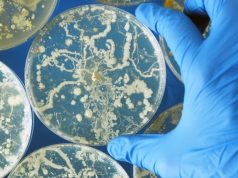Testing significantly less likely when diagnosis made by pediatrician, family practice clinicians
By Lori Solomon HealthDay Reporter
WEDNESDAY, July 12, 2023 (HealthDay News) — Confirmatory laboratory testing is only used in one in five cases of suspected tinea capitis (TC), according to a research letter published in the July issue of the Journal of the American Academy of Dermatology.
Jeremy A.W. Gold, M.D., from the U.S. Centers for Disease Control and Prevention in Atlanta, and colleagues calculated TC incidence and described testing and treatment practices for 3.9 million commercially insured U.S. children identified from the Merative MarketScan Commercial Database (July 1, 2016, to Dec. 31, 2020).
The researchers found that the one-year TC incidence was 16.3 per 10,000 person-years, with incidence highest among 5-year-olds (31.6 per 10,000 person-years), boys (20.9), and Southern residents (22.5). Pediatricians made the most diagnoses (54.6 percent), followed by dermatologists (11.7 percent) and family practitioners (10.4 percent). Clinicians infrequently used confirmatory testing (21.9 percent). When used, the most common tests were fungal culture (17.8 percent) and direct microscopy (9.7 percent). Testing was significantly more common for diagnoses by dermatologists (51.0 percent) versus pediatricians (16.4 percent) or family practitioners (11.0 percent). Three-quarters of patients were prescribed an antifungal (61.2 percent an oral antifungal and 14.7 percent a topical antifungal therapy).
“Most patients diagnosed with TC received no confirmatory laboratory testing, which is concerning because visual inspection alone of suspected cutaneous fungal infections can lead to diagnostic errors and unnecessary antifungal use,” the authors write.
Copyright © 2023 HealthDay. All rights reserved.








